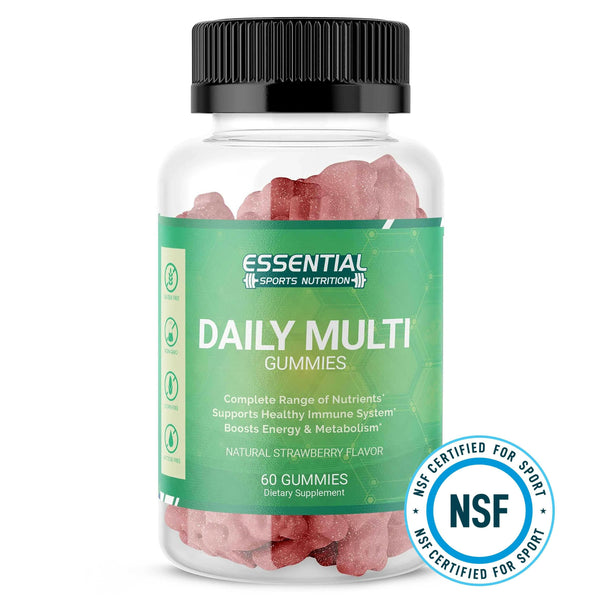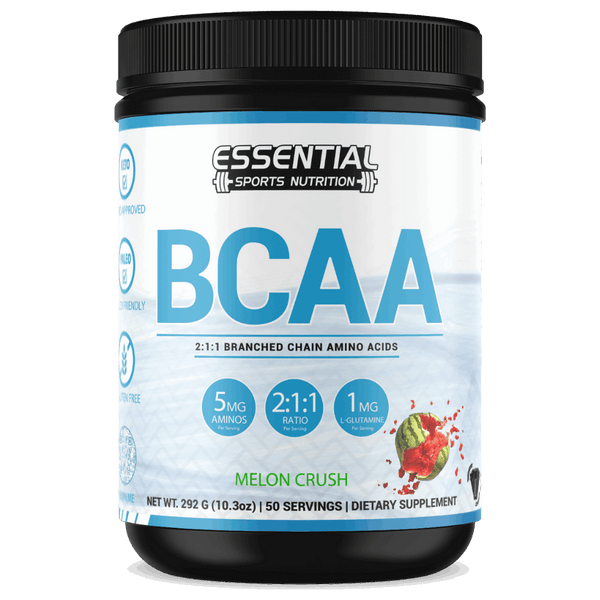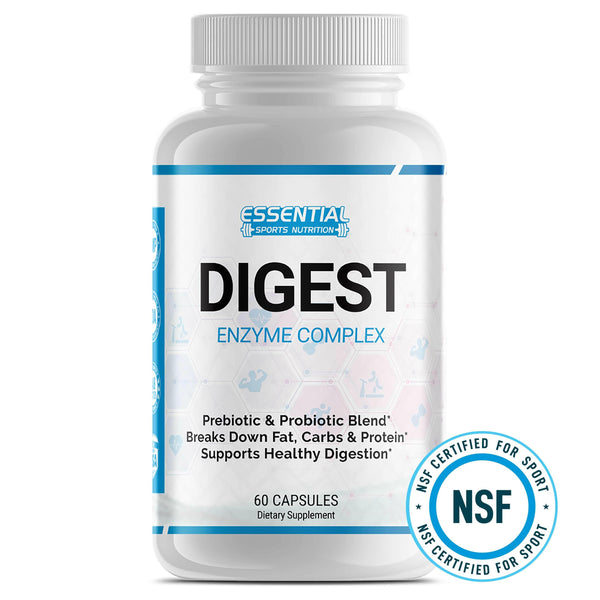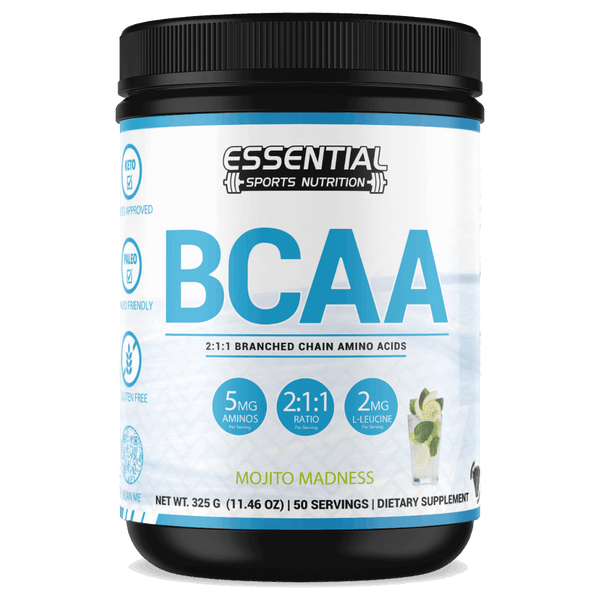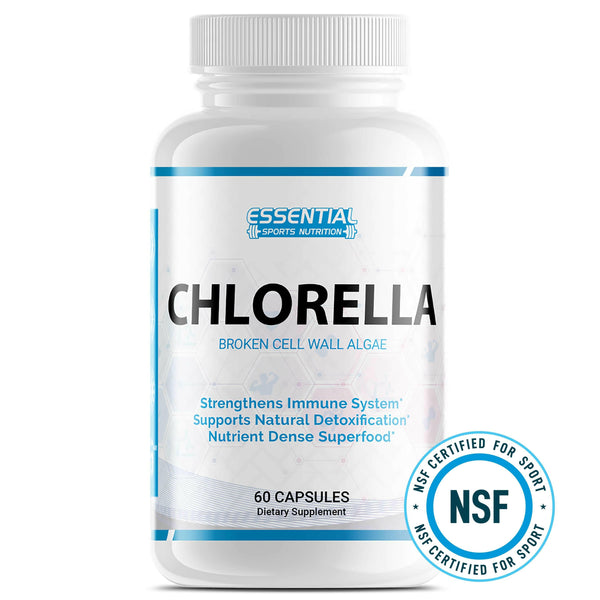Paleo Diet and Heart Health: Minimize the Risk of Cardiovascular Disease
When looking into heart disease prevention, it's impossible to overlook the influence of diet on cardiovascular wellness. The Paleo Diet, with its focus on whole, unprocessed foods, might just be the missing piece in your journey towards a healthier heart. You might be surprised at the paleo diet benefits, especially when it comes to promoting heart health through the paleo diet. Let’s delve into how optimizing heart health with a paleo diet could be a game-changer for you.
Key Takeaways
- The Paleo Diet could play a crucial role in preventing heart disease.
- Cardiovascular wellness may be enhanced by the natural food choices in the paleo diet.
- Benefits of the paleo diet include potential reductions in blood pressure and body fat.
- A diet change towards paleo can contribute to overall heart health optimization.
- Focusing on paleo principles might offer a new perspective on promoting heart health.
Understanding the Paleo Diet and Its Historical Significance

Delving into the history of our ancestors' dining habits uncovers a time before modern convenience foods when the Paleolithic diet or hunter-gatherer diet was the blueprint for survival. Enthusiasts believe that by connecting with these ancestral dietary patterns, we can steer clear of the lifestyle diseases that plague society today. Let’s dig deeper into what the Paleo Diet entails and the impact of evolution on our current human diet.
What Is the Paleo Diet?
You've likely heard the term 'Paleo Diet', but what does it really encompass? This eating plan draws its core philosophy from the Stone Age diet consumed by our ancestors. It's a regimen rich in fruits, vegetables, lean meats, fish, and nuts—foods that were hunted or gathered before the dawn of the agricultural revolution.
The Evolution of Diet and Human Health
The journey through nutritional evolution has been a dramatic one. The swift changes ushered in by farming and industrialization introduced a trove of processed foods that our ancient genetic makeup might not recognize. Advocates of the Paleolithic diet argue that these dietary shifts have not been paralleled by an equally significant genetic adaptation, leading to modern health issues such as obesity, diabetes, and heart disease. The Paleo Diet proposes a return to the basics, to align our dietary intake with our evolutionary design.
Paleo Diet for Cardiovascular Health

Embarking on a Paleo Diet for cardiovascular health may seem like a journey back in time, but it is increasingly being recognized as a forward-thinking approach to reducing cardiovascular disease risk. By emphasizing the consumption of whole foods like omega-3-rich fish, lean proteins, and a variety of fruits and vegetables, the Paleo Diet aligns well with many heart-healthy lifestyle principles. Your heart health could be optimized with a Paleo diet by addressing key cardiovascular risk factors.
While it may not be tailored specifically for heart disease prevention, studies suggest that following the diet's guidelines instigates positive changes in body composition and metabolic health. For example, a reduction in hypertension—a critical factor in cardiovascular health—has been linked to the natural food selections favored by the Paleo lifestyle. Those looking to improve glucose tolerance could also find the diet effective, particularly intriguing since researchers stress its importance due to diabetes' connection to cardiovascular risk factors.
Even though certain cardiovascular benefits have been noted, such as decreased body fat and improved blood pressure levels, it is pointed out by experts that more extensive research is necessary to validate the effectiveness of the Paleo Diet in preventing heart disease. As with any dietary adjustment, it is recommended you consult with a healthcare provider to tailor the approach to your individual needs.
Remember, optimizing heart health with a Paleo Diet means making conscious food choices that not only nourish the body but also support vital cardiac functions. By taking a cue from our ancestors' way of eating, we may be able to embrace a lifestyle conducive to a stronger, healthier heart.
- Focus on quality protein from fish and lean meats to tackle high blood pressure and obesity.
- Include a rainbow array of fruits and vegetables to supply fiber and essential nutrients.
- Understand that while promising, the Paleo Diet's heart benefits require more research for conclusive evidence.
Modern-day diets laden with processed foods and sugar have propelled heart health to the forefront of nutritional concerns, making alternatives like the Paleo Diet increasingly popular for those seeking a heart-healthy regime. It’s about returning to our roots—literally and figuratively—to possibly reclaim the robust cardiovascular wellness our ancestors enjoyed.
Nutritional Profile of the Paleo Diet

Delving into the Paleolithic diet, you'll discover a nutritional framework centered around foods presumed to be consumed by our ancestors. This diet emphasizes a return to healthy eating fundamentals, with a focus on whole, nutrient-dense foods known to be beneficial in managing cardiovascular risk factors. Let’s dissect the components of this diet that contribute to heart health.
Key Components of a Heart-Healthy Paleo Meal
The heart of the Paleo Diet is forged by its consumption of lean meats and fish rich in omega-3 fatty acids, known for their potent heart-healthy properties. Foods like salmon, mackerel, and grass-fed beef are staples, working to equip your body with the necessary tools to ward off cardiovascular diseases. Accompanying these protein sources are a variety of eggs, nuts, and seeds—each offering its own blend of fats and nutrients essential for a balanced diet.
The Role of Omega-3 Fatty Acids in Heart Health
As a component of the paleolithic diet, omega-3 fatty acids are highly regarded for their contribution to cardiovascular health. Predominantly found in fish, these essential fats have been linked to reduced inflammation and lower blood pressure. Evidence from renowned nutrition journals spotlights the importance of incorporating foods high in omega-3s, such as fish, into your meals to optimize heart health and combat cardiovascular risk factors.
| Food Item | Omega-3 Content | Recommended Serving | Additional Benefits |
|---|---|---|---|
| Salmon | 2.3g per 3oz | 2 servings per week | High in protein, vitamins D and B |
| Mackerel | 2.6g per 3oz | 1-2 servings per week | Richest dietary sources of vitamin B12 |
| Walnuts | 2.5g per 1oz | A handful daily | Good source of antioxidants and fiber |
| Flaxseeds | 1.8g per 1 tbsp | 1-2 tbsp daily | Rich in lignans, which may reduce cancer risk |
Taking inspiration from our hunter-gatherer predecessors, the paleolithic diet not only reveres the past but also acknowledges modern nutritional science by promoting elements like omega-3 fatty acids and lean meats, which together weave the fabric of healthy eating into the tapestry of daily life. Your journey towards a heart-healthy lifestyle through the Paleo Diet can start with these foundational foods known to keep cardiovascular wellness in check.
Elimination of Processed Foods and Heart Disease Prevention

In a world where processed foods are ubiquitous, the Paleo Diet promotes a return to a more natural dietary pattern. The association between highly processed foods, diabetes, and heart disease, and increased heart disease and stroke risk is becoming increasingly clear. It is essential to understand the detrimental effects that ingredients such as saturated fat and cholesterol commonly found in processed foods, have on your heart health.
Processed Vs. Natural: Effects on the Heart
The stark difference in health outcomes between consumption of processed versus natural foods is backed by scientific evidence. A systematic review and meta-analysis have pointed out that natural foods like fruits and veggies considerably cut down your risk of heart disease, whereas processed items elevate it.
The Impact of Sugar and Processed Carbohydrates on Cardiovascular Risk
Diets high in refined sugars and processed carbohydrates are a known enemy in the fight against cardiovascular disease. Such dietary patterns lead to weight gain, metabolic syndrome, and a domino effect ultimately impacting your heart. The Paleo Diet's approach of excluding these processed items helps in managing these risk factors more effectively.
| Factor | Processed Food Intake | Natural Food Intake |
|---|---|---|
| Cholesterol Levels | Increased LDL ('bad' cholesterol) | Balance of HDL ('good' cholesterol) and lower LDL |
| Diabetes Risk | Higher risk of Type 2 Diabetes | Reduced risk and better management of blood sugar levels |
| Inflammation Markers | Higher levels of inflammation | Lower levels of inflammation |
| Body Weight | Contributes to obesity | Supports healthy body weight maintenance |
Reducing or eliminating processed foods can have a profound impact on your cardiovascular health. Embracing the Paleo Diet’s emphasis on whole and unprocessed foods can be an effective strategy for heart disease prevention and ensuring healthier dietary patterns.
Benefits of Fruits and Vegetables on Heart Health
If you're looking to prevent heart disease and manage cardiovascular disease risk factors, the Paleo Diet's emphasis on fruits and vegetables may be just what your heart needs. But why are these colorful foods cornerstones of heart-healthy eating? Let's dive into the reasons and how they align with dietary patterns known for fostering cardiovascular well-being, such as the Dietary Approaches to Stop Hypertension (DASH).
Epidemiological evidence suggests that populations with a high intake of fruits and vegetables experience lower rates of heart disease, and this is not just a coincidence. These natural powerhouses bring with them a myriad of vitamins, minerals, and phytochemicals, in addition to fiber, all of which play key roles in maintaining heart health. For example, potassium-rich foods like bananas and sweet potatoes are known for their ability to help manage blood pressure—a vital factor in heart disease prevention.
| Food Item | Key Nutrients | Benefits |
|---|---|---|
| Blueberries | Antioxidants, Vitamin C | Supports vascular health |
| Spinach | Iron, Magnesium, Potassium | Helps reduce blood pressure |
| Avocado | Healthy fats, Vitamin E | Improves lipid profiles |
| Carrots | Beta-carotene, Fiber | Low in calories, high in satiety |
Adhering to a diet akin to DASH doesn't have to be challenging; by making fruits and veggies a staple in your meals, you're already on the right track. Eating a variety of these nutrient-dense foods can significantly reduce your risk of developing cardiovascular illnesses. It's the combination of high-nutrient and low-calorie properties that makes these natural ingredients an unbeatable team for your heart's health. So, load up your plate with fresh produce—it's a simple yet powerful step toward a robust and happy heart.
Comparing Paleo with Other Diets: Mediterranean, DASH, and Western Diets

When you embark on a journey to improve your heart health, the diet you choose is a key ally in your quest. The Paleo Diet, with its emphasis on whole foods and lean proteins, is often pitted against other popular eating plans. Let's delve into how it compares to other dietary approaches known for their cardiovascular benefits.
How Does Paleo Stack Up Against the Mediterranean Diet?
The Mediterranean Diet is often considered the gold standard for heart health, praised for its mix of nutrient-dense foods that have been shown to protect the heart. At the heart of a Mediterranean prospective cohort study is the inclusion of diverse fruits, vegetables, whole grains, and lean meats that work in harmony to support cardiovascular wellness.
Unlike the Paleo Diet, the Mediterranean eating plan also endorses the consumption of whole grains, legumes, and low-fat dairy—food groups believed to be critical for a well-rounded nutritional profile that can contribute to a lower risk of heart disease.
DASH Diet and Cardiovascular Health: A Comparison
Like its Mediterranean counterpart, the DASH Diet is designed with cardiovascular health in mind, focusing on lowering blood pressure, a significant risk factor for heart disease. While Paleo sidesteps dairy and grains, the DASH diet integrates these components, aligning with recommendations from numerous prospective cohort studies showcasing their benefits.
In comparison to the Western Diet, which is often characterized by high intakes of red meat, processed foods, and refined sugars, Paleo and DASH diets refuse such elements, aiming instead for a clean, whole-food-based approach. This shared philosophy may offer advantages over the Western Diet in terms of cardiovascular risk.
However, when it comes to the comparatively modern Keto and Paleo diets, both eliminate higher-carbohydrate food groups like grains and most legumes. The Keto diet, with its high-fat regimen, contrasts starkly against these other diets, and the potential long-term effects on heart health remain a hot topic among experts.
Although the Paleo philosophy overlaps with broader principles seen in healthy eating patterns such as the Vegetarian Diet, which emphasizes plant-based foods, it differs in its advocacy for meat consumption and the exclusion of grains and dairy. The diversity among these diets illustrates the complexity of dietary choices and the importance of personalizing nutrition to fit individual health needs.
Understanding the strengths and limitations of each diet can empower you to make informed decisions that best suit your lifestyle and health goals.
The Controversial Debate: Paleo Diet vs. Whole Grains and Legumes

When considering a heart-healthy diet, the inclusion of whole grains and legumes has been a topic of discussion contrasting the perspectives of modern nutrition and Paleo proponents. The American Heart Association recognizes the benefits of whole grains and legumes in a balanced diet, yet the Paleo Diet suggests that their exclusion may lead to improved health outcomes.
The American Heart Association’s Stance on Whole Grains
The American Heart Association advocates for the consumption of whole grains due to their rich dietary fiber content, which is known to reduce cardiovascular disease risk. Whole grains can lower cholesterol levels and play a role in preventing stroke, obesity, and type 2 diabetes—integral components of a healthy diet.
Revisiting the Exclusion of Legumes in the Paleo Diet
Contrary to the legume recommendations by the American Heart Association, the Paleo Diet advises against legumes. Despite their high fiber and protein content, Paleo enthusiasts argue that legumes may contribute to inflammation and thus impact heart health negatively. Nonetheless, heart-healthy paleo recipes offer alternative nutrient-dense foods aiming to reduce cardiovascular disease risk without the need for grains or legumes.
Let's examine the nutritional profiles of these contested food categories:
| Nutrient | Whole Grains | Legumes | Paleo Alternatives |
|---|---|---|---|
| Fiber | High | High | Varies |
| Protein | Moderate | High | High |
| Carbohydrates | High | High | Low |
| Anti-Nutrients | Present | Present | Minimal |
| Vitamins & Minerals | Varied | Varied | Varied |
In conclusion, the discussion around whole grains, legumes, and the Paleo Diet is multifaceted, involving not only individual nutritional value but also broader dietary patterns and their effects on health. As you navigate these waters, consider both sides of the debate to make informed decisions that best suit your health goals and lifestyle.
Optimizing Heart Health with Paleo Diet

Embarking on the Paleo diet has led to promising possibilities for those concerned with cardiovascular risk and the quest for healthy eating patterns. This diet's philosophy to emulate the dietary patterns of our ancestors might seem like a leap into the past, but it could be a forward-thinking choice for your heart health.
When you follow the Paleo diet, you engage in a natural way of eating that could reduce factors contributing to heart disease. For instance, the focus on unprocessed foods may help manage chronic diseases that are often exacerbated by modern dietary lifestyles. Remember, the elimination of processed foods in favor of whole, unprocessed options is at the core of the Paleo framework.
Studies, like those by Mellberg et al., show positive changes in individuals adhering to the Paleo diet, including improved glucose tolerance and weight loss. What this means for you could be a substantial reduction in the cardiovascular risk factors often associated with the typical Western diet, which is laden with sugars, refined grains, and preservatives.
Explore how the Paleo diet reinforces healthy eating patterns and consider how its principles might complement your journey toward optimal heart health:
- Leveraging high-quality protein sources from lean meats
- Incorporating a rich variety of fruits and vegetables
- Enjoying beneficial fats from nuts and seeds
- Avoiding foods known to cause inflammation and weight gain
Bearing in mind, however, that the Paleo diet's impact on different individuals may vary and it could entail nutritional gaps — especially due to its exclusion of grains and legumes — it's crucial to assess whether it's the right dietary pattern for you. This approach to dieting may work well for some looking to enhance their heart health, but it’s essential to consider the full spectrum of nutritional needs and to consult with healthcare professionals when tailoring any diet to your personal wellness goals.
Practical Tips for Incorporating Paleo Diet for Heart Health

Embarking on a culinary journey towards a healthier heart can be fulfilling and delicious with heart-healthy paleo recipes. Whether you're a culinary novice or a seasoned chef, the main focus of such dishes is the quality of ingredients. Think vibrant vegetables, sustainable seafood, and premium grass-fed meat. These provide not only essential nutrients but also pack a flavorful punch.
Heart-Healthy Paleo Recipes
Preparing your meals with heart health in mind does not have to be a chore. Recipes designed with the paleo diet's principles can be both nutritious and enjoyable. An example might be a salad rich with leafy greens, topped with grilled salmon, and a side of assorted berries. The omega-3 fatty acids from the fish work in tandem with the antioxidants from the berries to create a dish that’s as beneficial as it is beautiful.
Strategies for Transitioning to a Paleo Lifestyle
Transitioning to a paleo diet for heart health can seem daunting, but with a few simple strategies, you can make the dietary shift seamless and sustainable. A helpful tip is to gradually replace processed items with whole-food counterparts. An apple instead of apple juice or a baked sweet potato instead of fries—it’s about choosing the more natural option.
| Processed Item | Paleo-Friendly Substitute | Benefit |
|---|---|---|
| White bread | Almond flour bread | Lower glycemic index |
| Peanut butter | Almond butter | More monounsaturated fats |
| Canola oil | Extra virgin olive oil | Rich in polyphenols |
| Cereal | Nuts and seeds mix | More fiber and less sugar |
| Soft drinks | Infused water | No added sugars |
As with any healthy diet, variety is the spice of life. Work on diversifying your intake within the boundaries of the Paleo Diet, allowing for a wide spectrum of vitamins and minerals. This not only fortifies heart health but also keeps your palette intrigued. Remember, it's important to consult with healthcare professionals before making major dietary changes, ensuring that your path to wellness is safe and personally tailored.
Conclusion

As you consider the relationship between the paleo diet and heart health, it becomes apparent that this approach to nutrition holds promise in steering you toward enhanced cardiovascular wellness. The journey through our ancestors' dietary habits, unearthing the rich tapestry of natural foods, aligns with ongoing efforts in heart disease prevention and fostering diet and cardiovascular health. Represented by these eating principles, the paleo diet has emerged as a beacon of hope for those striving for a robust cardiac profile.
Naturally, as with any exploration into the realm of health and nutrition, incorporating findings from paleo diet research into your life should be done with both awareness and caution. Empower yourself with heart health awareness and recall that while certain studies have indicated a reduction of risk factors, such as improved blood pressure and leaner body mass, a definitive endorsement for the paleo diet as a cure-all for cardiovascular disease is yet to solidify. More rigorous research is necessary to fully comprehend the diet's long-term impact on heart health.
Personal health is profoundly individual, and what works well for one may not for another. Before adjusting your sails towards the paleo shores, it's prudent to consult with healthcare professionals familiar with your personal medical history. They can provide guidance anchored in expertise, tailored to your unique cardiovascular needs. The paleo diet remains a noteworthy contender in the vast sea of dietary strategies aiming to keep our hearts strong and enduring.
How the Paleo Diet Affects Heart Health FAQs
Q: What is the paleo diet?
A: The paleo diet, also known as the caveman diet, is a dietary plan based on foods that would have been available to our ancestors in the Paleolithic era, such as lean meats, fish, fruits, vegetables, nuts, and seeds.
Q: How does the paleo diet affect heart health?
A: The paleo diet can positively impact heart health by promoting the consumption of whole, nutrient-dense foods rich in essential nutrients and antioxidants that support cardiovascular function.
Q: Are there any health risks associated with the paleo diet?
A: While the paleo diet emphasizes whole foods, some variations may restrict certain food groups like grains and dairy, potentially leading to nutrient deficiencies if not planned carefully.
Q: Is dairy allowed on the paleo diet?
A: Strict followers of the paleo diet typically avoid dairy products due to their modern farming and processing methods, but some less restrictive forms of the diet may include limited amounts of certain dairy products.
Q: Does the paleo diet align with healthy eating guidelines recommended by organizations like the Mayo Clinic?
A: The paleo diet shares similarities with healthy eating guidelines recommended by organizations like the Mayo Clinic in terms of promoting whole foods, lean proteins, fruits, and vegetables but may differ in specific food restrictions.
Q: Can the paleo diet help prevent heart disease?
A: The nutrient-dense nature of the paleo diet, combined with its focus on whole foods and elimination of processed foods, may contribute to a reduced risk of heart disease when followed as part of a balanced and varied diet.
Q: How can I ensure a balanced approach to the paleo diet for optimal heart health?
A: To ensure a balanced approach to the paleo diet for optimal heart health, it’s essential to include a variety of nutrient-rich foods, monitor your intake of essential nutrients like calcium and vitamin D, and consult with a healthcare provider or dietitian if necessary.



